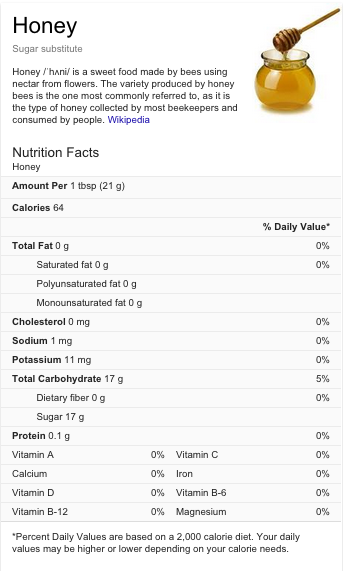Honey is truly an amazing resource and humans from the beginning of civilization utilized the sweet substance for a multitude of uses … not just a sweet treat. And it’s great for preppers to stock up on because it doesn’t go bad. It may crystallize but pure honey has no expiration date.
This past summer I helped a close relative that developed some significant wounds left over from a bout with shingles. These wounds were being very stubborn. After a trip to the wound care clinic they determined to treat the wounds with honey. After a few weeks of honey for wound healing they were healed. I was amazed at it’s ability to heal wounds – especially considering the elderly age of the patient and history with slow healing.
***Disclaimer*** Infants under 1 yr of age are not supposed to consume honey. Foods cooked with honey are okay but no raw or from the bottle. Risk of botulism …
Super Energy
Need an energy boost? Honey is sweeter than sugar. For example 1 tablespoon of granulated sugar provides roughly 46 calories while the same amount of honey supplies 64 calories. *info based on USDA honey regulations
In survival mode your body will consume tons of calories. Honey can help give you the energy you need to keep going. Honey is also packaged in small containers that are easily packed and stored in your survival gear and go bags.
Seasonal Allergy Relief
Honey is well known to reduce or eliminate the suffering from seasonal Allergies. This effect is essentially because you’re pre-exposing yourself to allergens in a contained and controlled manner.
Honeybees collect pollen a.k.a. allergens and turn that pollen into calorie rich liquid. So when you’re consuming that honey you’re basically immunizing yourself against what causes your allergies.
You can’t expect this effect from pasteurized and commercial brands of honey. For true allergy relief you must consume local, raw, unfiltered, totally natural honey. Small country gift shops and general stores are among the best places to find local raw honey.
For Healing Wounds
Honey (medical grade) has finally been approved by the FDA for healing wounds. But honey as a healing agent isn’t anything new. Honey has been used to heal open wounds for thousands of years. It’s antibiotic and anti-inflammatory properties are well known.
Honey can be applied directly to open wounds. It has been found to stop necrosis in tissue when applied to wounds.
Honey works great on wounds caused by:
*Burns
*cuts
*other trauma
Honey is proven very effective to prevent infections of open wounds while greatly decreasing the healing time.
Applying Honey to Wounds
If possible difficult to heal wounds should be checked out by a doctor or a medical professional. But we know that isn’t always an option so here are the basics of applying honey to heal a wound.
Don’t be stingy with the honey unless you have a limited supply. If the wound is seeping or excreting then the honey will be diluted and you’ll need more. Bandages will also soak up some of the honey.
Change the dressing … when needed. This will depend on how quickly the honey is being diluted by any seepage of the wound. As the wound heals bandage changes will become less frequent.
An Occlusive Dressing will help reatian the honey from escaping the wound area.
The easiest method of applying honey to a wound would be applying the honey to the dressing and then applying the impregnated dressing to the wound. This will make less mess. Personally when treating a wound with honey (as instructed by a wound care clinic) I apply the honey directly to the wound first, then put a little on the dressing before applying it.
Any abscess or cavity wound will need to be filled with honey and possibly packed with gauze. Don’t be shy.
Finding Wild Honey
If you don’t have honey stocked up or can’t find any in your cupboard then you aren’t completely out of luck.
Finding wild honey isn’t the easiest task. Unless you’re just lucky to come across a beehive it takes observation and technique to locate wild honeybee hives.
For tips check out this article: The Art of Bee Lining.
One of the best places to find wild honeybee hives are large damaged trees. They like to build their hives in hollow trees. Check trees that are broken and damaged. These are often the best candidates for locating a honey bee hive.
Sterilized vs. Non-Sterilized Honey
Non-sterilized honey has been used extensively in studies on treating wounds. There is an argument that using non-sterilized honey could lead to an infection by clostridia and lead to wound botulism.
When honey dilutes with body secretion it produces a small amount of hydrogen peroxide which would likely kill any germinated clostridia spores.
You can read more about this in detail here:
Honey’s healing powers have done nothing but impress me. It’s now our household’s go-to for wound healing and seasonal allergy prevention.
Have you used honey as a wound dressing with positive or negative results? We’d love to hear about your experiences!
Resources:
http://www.webmd.com/diet/medicinal-uses-of-honey
http://www.webmd.com/vitamins-supplements/ingredientmono-738-honey.aspx?activeingredientid=738&activeingredientname=honey’

